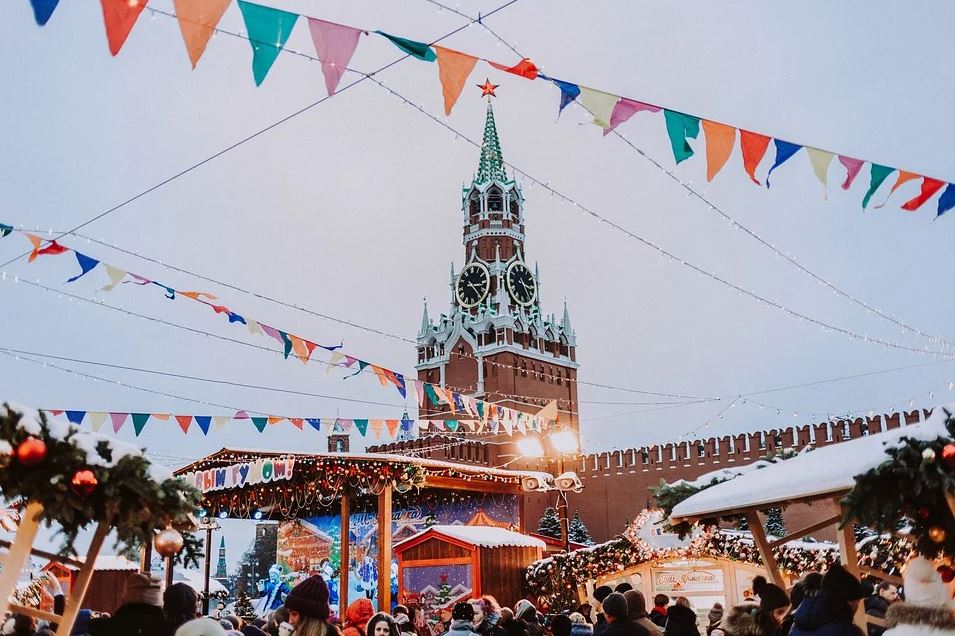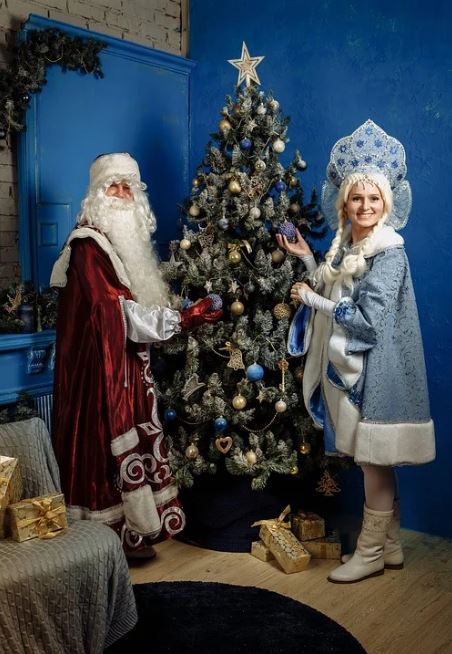“The fireplace is burning bright, shining along me
I see the presents underneath the good old Christmas tree
And I wait all night ’til Santa comes to wake me from my dreams
Oh, why? ‘Cause that’s Christmas to me” ~ Pentatonix
With the holidays right around the corner, The AEGEEan decided to have a glimpse into the holiday traditions in different parts of Europe. Surely, Europe, a land of diverse colourful cultures has some interesting holiday traditions and stories. So buckle up and as Frank Sinatra said, “Come fly with me, we’ll fly, we’ll fly away”. First stop; Russia!

If you’re going to spend your winter holidays in Russia, you need to be prepared for it, because this will be something you have probably never experienced before. The first thing we need to mention is that in Russia, unlike most European countries, the New Year is a more important holiday than Christmas; however, it would be a simplification to say that Russians don’t celebrate the latter at all.
It was only in 1700 that Russia first celebrated New Year on the 1st of January. Tsar Peter the Great was previously inspired by Western European Christmas & New Year traditions and published a law that, among others, changed Russia forever. We used to celebrate New Year on the 1st of September, and before that, on the 1st of March. According to Peter’s law, all Muscovites had to decorate their houses with fir trees, burn fires and launch fireworks, congratulate each other, and have as much fun as they could. The main feast was organised on Red Square of course. Since then, the traditions of New Year have remained mainly the same.
At the beginning of the 20th century, Russians got their own Santa Claus – Ded Moroz (Father Frost) who brought presents to children just like his Western counterparts did. Until the Revolution of 1917, Christmas remained the main winter holiday and New Year was regarded merely as an addition to Christmas. Christmas took place on the 25th of December, just like in Western countries today, but as the Communists came to power and introduced the Gregorian calendar, the Orthodox Church objected to this and continued celebrating Christmas following the old Julian calendar, i.e., on January 7th. At the same time, a new artificial holiday named The Old New Year emerged. It is celebrated, if needed, on January 13.

The Communist Party waged war against religions in the Soviet Union and as a result, in 1929, celebrating Christmas was outlawed. All the traditional attributes of Christmas now became an integral part of the New Year’s feast. From the 1930s, Ded Moroz has been accompanied by his “granddaughter” Snegurochka, literally The Snow Maiden, who is a character of Russian fairy tales. After the collapse of the USSR in 1991, Christmas officially returned as a public holiday. But up to now, it is not celebrated with the same scope or significance in Russia as New Year is. I would say Christmas in Russia is for really religious people, but the tradition of, say, the whole family gathering at the table on Christmas Eve is not that widespread.
New Year, by contrast, can be celebrated in a close family circle, at a loud party with friends, or both during the same night. However, should you decide to experience New Year in Russia, it must bring joy and make you happy. We have a saying, “One will spend the whole year the way they meet it”, so negative emotions during the whole night on 1st January are prohibited! There are plenty of superstitions connected with the New Year night in Russia that have come from all over the world, making up quite a bizarre combination. Nowadays Russians increasingly take into consideration the Chinese calendar and try to dress up (one must always wear new clothes for the new Year!) in the colours of the coming year and set the table accordingly.
To sum up, the Russian New Year looks more or less like the following: Russia has 11 time zones, so being in Moscow, you can start celebrating at 15.00 with people living in Russia’s most eastern territories. The evening of 31st of December is typically dedicated to preparing food, lots of food that will then remain for the following holiday week. While cooking, Russians normally watch good old Soviet comedies like The Irony of Fate, Ivan Vasilievich: Back to Future and o on. Vital parts of the festive table are Russian salad and five or ten other salads, caviar, sausages, cheese, bread, a hot meal, sparkling wine, and as if that were not enough, cakes, fruits, and chocolates. The richer the table is, the more wealth you can count within the coming year. Same goes for the Christmas tree, the more luxurious it looks like, the better. Remember to hang a decoration with the symbol of the coming year according to the Chinese calendar.
At around 23.00, you can finally gather with your dearest ones at the table. We say “thank you” and “goodbye” to the previous year, and after the President’s speech, you’re expected to stay awake till at least 4 a.m. There are different ways of making wishes when the clock on Spasskaya Tower on Red Square strikes 12. There are people who eat 12 grapes like in Spain; in my family, we write our wishes on small pieces of paper, burn them to ashes and drink with champagne. Typically, everybody then goes for a walk in the frosty night to launch fireworks or burn Bengal lights and congratulate others. If you have survived a typical Russian New Year till morning, well done. Hopefully you’re looking forward to the next one!

